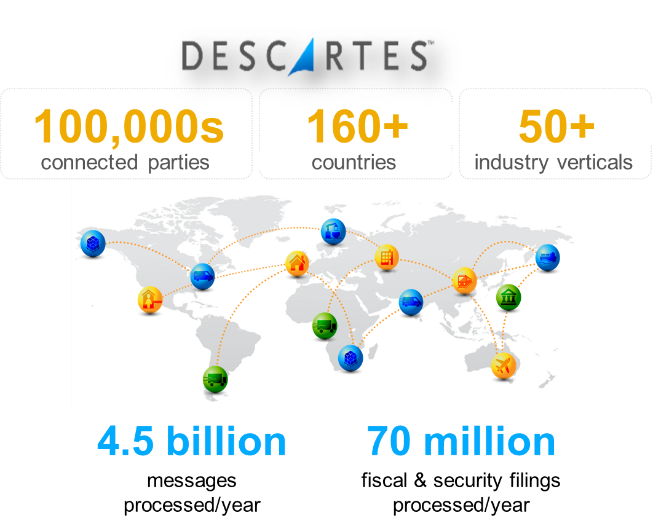
- SAP Community
- Groups
- Industry Groups
- SAP for Travel and Transportation
- Blogs
- Connecting the Dots in Logistics
- Subscribe to RSS Feed
- Mark as New
- Mark as Read
- Bookmark
- Subscribe
- Printer Friendly Page
- Report Inappropriate Content
How do you manage something that is constantly moving? One of my daughters is in constant motion and keeping up with where she is, what she is doing, and what she is even saying is a good family experience, but exhausting.
As consumers, we are propelling the transportation and logistics industry to innovate on how they can fulfill our demands with 24x7 real-time monitoring, updates, and alerts. Further, as these technologies come to market, we have become accustomed to expect it. But, we as consumers are at the end of the line. There is quite a bit of activity that happens before I hear the doorbell letting me know the package containing my daughter’s latest obsession is sitting on our doorstep.
Up to the point customers receive packages, companies receive products, manufacturers build those products, and for that matter, when the raw materials come into the light of day; technology is telling us when, where, and sometimes how that is happening. How this is happening is progressing from older less timely and more manual technology to real-time, sensor based technology. No, I didn’t put a sensor tag on my daughter! But let’s take a step back since this didn’t happen overnight. The industry has been working hard to meet the demand for deep insight into supply chains for a while, but only recently has it really exploded. While RFID has been around in the 80s, Walmart was probably the catalyst that kicked off serious commercial investment into RFID sensor technologies. Then, the Industrial Internet of Things (IIOT) is becoming like jet fuel to the investment and M&A engine, with sensor technologies are now projected to be over a $150 billion dollar industry by 2020.* (Sensors Online - http://www.sensorsmag.com/news/market-news/news/global-sensor-market-reach-1544-billion-2020-15033 )
Without knowing it, we rocketed into the Digital Age. Let’s look at the most recent innovations:
• Robotics
• Autonomous cars and trucks
• Real time predictable drive times based on current and future weather, traffic, and road conditions
• Rating truck drivers using sophisticated causal analysis of driver behavior and mechanical sensors
• …
What is in common with each of these innovations? The common requirement is knowing when, what, where, and how something happened in real time and we can’t do that without sensors, software, and automation. The first step is having solutions to acquire ubiquitous data from multiple sources, interpret the massive amount of data, process that data in real time, and convert it to real world useful information. This is challenging in itself, but how do you get to that data?
It boils down to connectivity within and amongst the logistics community and technology providers. Real time communication (or at least as close as possible to real time) is where we are headed. For commerce connectivity, it is crucial as a global community, to connect all the dots. Dots like shippers, freight forwarders, airlines, ocean shipping companies, trucking companies, brokers, 3PLs, and consignees. These companies with their own disparate data comprise a sophisticated network that makes, moves, stores, and delivers what we buy every day. Just like my daughter who I have to ‘track’ from the time she wakes to the time she goes to bed, the customer order is ‘tracked’ from creation to delivery. Technology married to the business process data gives us complete visibility to every step along the way, but the key is having it all aggregated to be easily monitored and analyzed.

As with any innovation, getting to the data has spawned new companies while rewarding investments made by existing ones. One such company that has earned their stripes is Descartes Systems, a SAP partner complementing SAP’s innovative logistics software and technology. For more information and Descartes and the SAP partnership, click here
The Descartes Glbal Logistics Network (GLN) is an open conduit to logistics data that is exchanged and consumed with analytics and tracking solutions from SAP and other software solutions. I use Flipboard for all my news – it is an excellent data aggregator from multiple sources for the news. You can think of the GLN as a logistics data aggregator designed with logistics operations in mind. The technical aspects we all forget about like data semantics, message delivery, regional or global data, cleansing, data governance and master data management are under the hood for the software solutions and analytics to deliver.
The logistics industry is evolving and siloes of critical decision support information and data can no longer be acceptable. There is competitive differentiation waiting to be unearthed and there are solutions already available to make that happen. All you need is to right platform and expertise to take advantage of it. SAP and Descartes working together will take you successfully on that journey. For more information on SAP’s Transportation and Logistics solutions, click here.
http://go.sap.com/solution/industry/transportation-logistics.html
For more information on the SAP and Descartes partnership from the Wall Street Journal, click here
- SAP Managed Tags:
- Travel and Transportation
You must be a registered user to add a comment. If you've already registered, sign in. Otherwise, register and sign in.